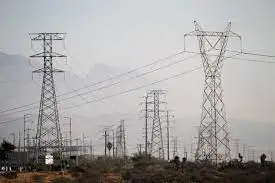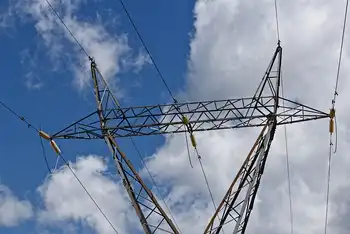Hiccups causing major delays at nuclear plant
By asahi.com
CSA Z463 Electrical Maintenance -
Our customized live online or in‑person group training can be delivered to your staff at your location.

- Live Online
- 6 hours Instructor-led
- Group Training Available
But these technical failures, responsible for yet another delay in two- decade-old efforts to launch the plant, are far from last-minute wrinkles.
Not only have they proved frustratingly difficult to iron out, the problems at the Rokkasho Reprocessing Plant, conceived as a major link in Japan's nuclear fuel recycling program, could shake the program to its foundations.
Plant operator Japan Nuclear Fuel Ltd. (JNFL) announced it would postpone the end of testing from February to August — the 16th time it has delayed completion of the plant, which was originally due to go into full operation more than a decade ago, in 1997.
The technical troubles affecting one of its two glass melting furnaces, built to treat complex, heat-generating radioactive materials so that they can be buried safely in the ground, continue to confound JNFL.
When in operation, the Rokkasho plant will reprocess spent fuel from nuclear power stations in Japan to extract plutonium, which will be burned again to generate electricity. But the latest delay could jeopardize the nation's nuclear fuel recycling policy.
The last five delays were due to malfunctions that occurred in the furnace in the process of vitrifying the liquid high-level radioactive waste. Especially embarrassing for officials is the fact that the process is performed with technology designed in Japan.
In the furnace, liquid waste from reprocessing is mixed with glass ingredients at 1,100 to 1,200 degrees, and the resulting molten glass is funneled into canisters to make solid glass.
The tests for the furnace started in November 2007, but had to be suspended on several occasions when the furnace became unstable, stalling the flow of molten glass.
In December last year, officials found damage in the furnace chamber, possibly from its bent churning rod. Then in January, 150 liters of liquid waste leaked from piping.
Because the waste is highly radioactive, furnace operations are all performed by remote control.
Balancing the ingredients and temperatures inside the furnace is difficult as waste materials made from nuclear fission themselves emit heat. Especially problematic are electricity-conducting platinum group elements that can interfere with the heating by galvanizing glass.
After repeatedly reviewing and fine-tuning their procedures, engineers discovered that the conditions for keeping the furnace stable required much stricter control than previously thought.
While the Rokkasho plant employs technology developed in France, a country with considerable experience in spent fuel reprocessing, the two glass melting furnaces at the plant were built with Japanese technology. Each was modeled on a test furnace at the Japan Atomic Energy Agency's Tokai reprocessing facility in Ibaraki Prefecture. The new furnaces, however, are more than five times as large.
Masatoshi Toyota, former president of Japan Nuclear Fuel Service Ltd., a JNFL predecessor, says the decision to use domestic technology was made at the urging of the government.
The French vitrification technology employs a different heating method that avoids problems with the platinum group. But the furnace is small and its life span is only 200 days.
The Japanese-made furnaces, on the other hand, will last five years. However, the fact that the Tokai furnace was unable to resolve difficulties with platinum group elements is a troubling sign for the Rokkasho project.
While JNFL attempts to resolve these issues with the current furnaces, it plans to start developing an improved version in fiscal 2009 in cooperation with the Agency for Natural Resources and Energy.
Hajimu Yamana, a professor at Kyoto University's Nuclear Recycle Chemistry Research Group, says "a certain elbow room" may have been lacking when incorporating a blend of fundamentals and experience into the Rokkasho furnace design.
"There is no other way than to take time to find conditions for stable operations," he said.
Meanwhile, Japan's fuel recycling program has come under scrutiny from the international community, which has asked questions about the country's handling of weapons-grade plutonium. Among non-nuclear nations, Japan is the only country allowed under the international nonproliferation regime to produce plutonium in its reprocessing plant.
Plans to use mixed plutonium-uranium oxide (MOX) fuel at existing reactors and build a domestic MOX production facility are based on the premise that the Rokkasho plant will eventually be put into operation.
At full capacity, the plant will reprocess up to 800 tons of spent fuel annually. From that volume of waste it will extract more than 4 tons of fissionable plutonium.
Electric utilities have proposed commissioning 16 to 18 reactors for pluthermal power generation using the MOX fuel by fiscal 2010. That many reactors would burn 6 tons of plutonium a year.
However, only five reactors have been approved; the rest were stalled by fierce opposition from local communities concerned about safety. The five reactors will use only 2 tons a year. That will leave a vast quantity of weapons-grade plutonium from the 31 tons already possessed by Japan — 25 tons of which are in storage in Britain and France, where Japan sent spent fuel to be reprocessed from the 1980s, and 6 tons in Japan.
As far as plutonium production is concerned, then, there is no urgency to put the Rokkasho plant into operation. The real problem is the disposal of spent nuclear fuel, which is already clogging storage pools at nuclear power stations across the nation.
According to the Federation of Electric Power Companies of Japan, Japan was holding 12,320 tons of spent fuel as of last September. The national capacity is 19,240 tons.
JNFL is also concerned about recouping the costs of the Rokkasho plant's construction.
However, the changing international political climate could affect Japan's plans. Under the new administration of President Barack Obama, the United States will likely shift away from its nuclear fuel recycling policy.
The Japan-U.S. agreement on nuclear energy, under which Washington accepts Japan's reprocessing operations only for peaceful purposes, will expire in 2018.
Japan could then be called upon to review its reprocessing operations.
"It's important for us to seek understanding from the United States about Japan's situation (in which fuel recycling is impossible without reprocessing)," said Tetsuya Endo, former vice chairman of the Atomic Energy Commission.











